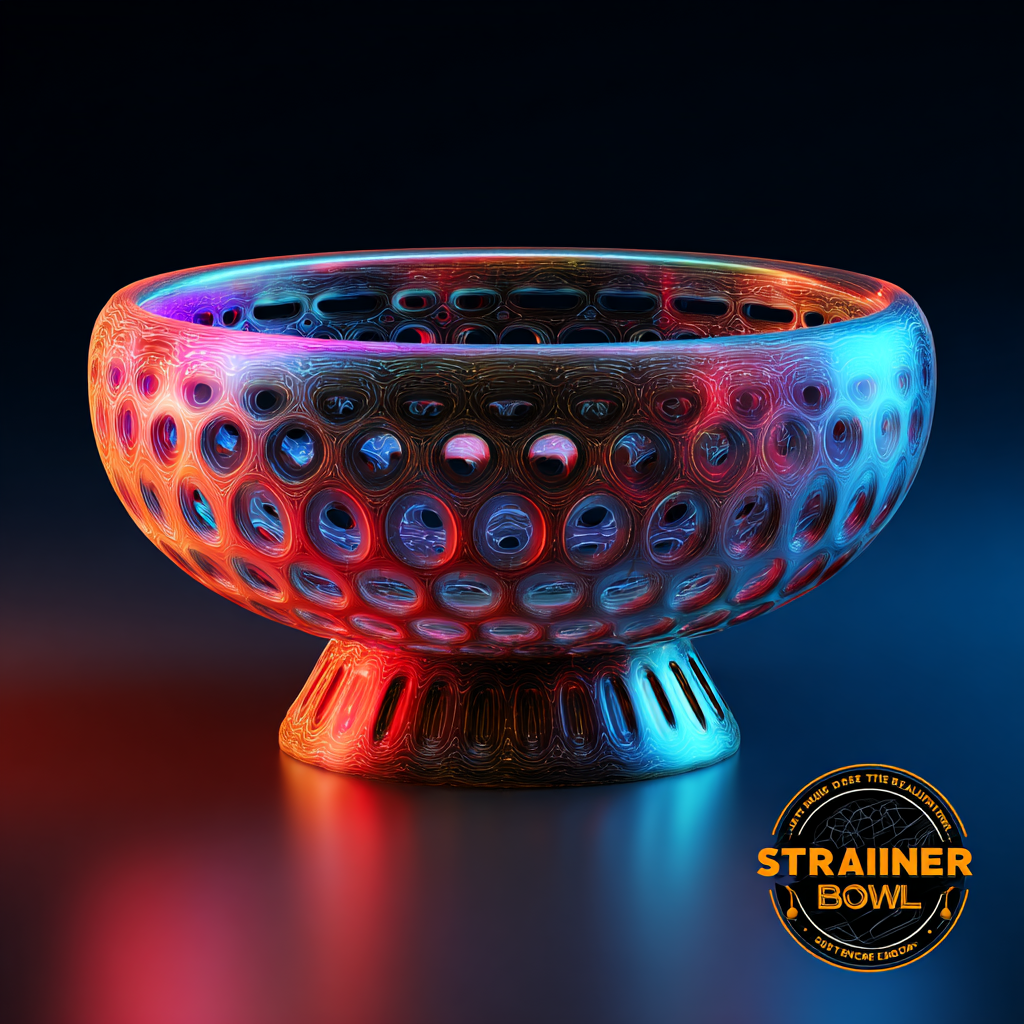Welcome to this website!

In the world of culinary equipment, the importance of a high-quality Strainer Bowl cannot be overstated. According to a report by Market Research Future, the global kitchenware market is projected to reach approximately $90 billion by 2025, driven by increasing consumer awareness about the functionality and versatility of kitchen tools. Among these, the Strainer Bowl stands out due to its essential role in food preparation, particularly in washing and draining ingredients efficiently. With the rising trend of home cooking and gourmet food preparation, understanding the technical specifications that define the best Strainer Bowl is crucial for both amateur cooks and professional chefs alike. This ultimate guide aims to delve into the key factors that influence product choice, including material durability, design efficiency, and maintenance ease, helping readers select a Strainer Bowl that best suits their culinary needs.

When selecting the best strainer bowl for your kitchen, understanding the various types available in the market is essential. Strainer bowls can be classified into several categories, including fine mesh, perforated, and colander-style designs. According to a recent industry report by Technavio, the global kitchen utensils market is expected to grow by 3% annually, highlighting the increasing consumer demand for specialized tools like strainer bowls. This growth is largely driven by the rising interest in home cooking, which has made effective kitchen gadgets more important than ever.
Fine mesh strainers are popular for tasks like rinsing grains or sifting dry ingredients, as their tightly woven design ensures even the smallest particles are filtered out. On the other hand, perforated strainers allow for quicker drainage, making them ideal for draining pasta or washing vegetables. A study from Grand View Research emphasizes that materials used in strainer bowls greatly affect their durability and performance; stainless steel and BPA-free plastics dominate the market due to their resistance to heat and odor retention. As consumers become more discerning about their kitchen tools, understanding these nuances is vital for making informed purchasing decisions.

When selecting a strainer bowl, understanding the key technical specifications is paramount to ensure optimal performance and durability. First and foremost, material is critical. Strainer bowls are commonly made from stainless steel, plastic, or glass. Stainless steel offers durability and resistance to rust, making it ideal for long-term use. On the other hand, plastic strainer bowls are lightweight and often more affordable, but they may not withstand high temperatures. Glass bowls provide a classic look and are non-reactive, but they require more careful handling.
Another vital specification to consider is the mesh size of the strainer. A finer mesh allows for the separation of smaller particles, which is essential for tasks like straining sauces or juices. Conversely, if your primary use involves draining larger items, a coarser mesh can expedite the process. Additionally, the size and capacity of the bowl play a significant role depending on the volume of food being prepared. Choosing the right diameter and depth ensures that you have enough space for your ingredients while preventing spills during use. Such considerations help streamline your cooking experience and make the straining process efficient.
When choosing the best strainer bowl, the material plays a crucial role in performance and durability. Stainless steel, plastic, and silicone each come with distinct advantages. According to a report by the International Housewares Association, stainless steel strainer bowls are favored for their heat resistance and longevity, making them an ideal option for high-traffic kitchens. They are also non-reactive, meaning they won’t alter the flavor of foods, which is critical when straining delicate items like fruits or sauces.
On the other hand, plastic strainer bowls are lightweight and often more affordable, making them appealing for everyday use. However, it's essential to choose BPA-free plastic to ensure food safety, as studies show that BPA can leach into foods at higher temperatures. If you frequently strain hot liquids or foods, consider opting for high-temperature-resistant plastics.
Silicone strainer bowls offer flexibility and a non-stick surface, which is great for easy cleaning and storage. Their ability to collapse minimizes storage space, appealing to those with limited kitchen areas. A reminder: when selecting silicone, look for food-grade silicone that can withstand temperature changes to avoid the risk of harmful chemicals leaking into your food.
When it comes to selecting the perfect strainer bowl, understanding how its size and design impact performance and usability is crucial. A well-designed bowl not only enhances functionality but also elevates the overall cooking experience. For instance, larger bowls provide ample space for mixing and straining, while deeper designs can help prevent spills during the process. Each aspect of the bowl's dimensions plays a vital role in ensuring that the user can efficiently handle various tasks, from rinsing fruits and vegetables to draining pasta.
In recent discussions among chefs and designers, the emphasis has been on finding bowls that marry convenience with style. Many recommend options that incorporate features such as non-slip bases or integrated handles for ease of use. The choice of materials also significantly affects performance; lightweight options provide maneuverability, while sturdier designs offer stability for more rigorous tasks. Ultimately, making an informed choice in bowl size and design ensures that the strainer bowl not only meets practical kitchen needs but also complements personal aesthetic preferences in culinary settings.
| Feature | Specification | Impact on Performance |
|---|---|---|
| Bowl Size | 10 inches in diameter | Ideal for straining small to medium quantities |
| Material | Stainless Steel | Durable and resistant to rust and staining |
| Mesh Size | Fine mesh (0.5 mm) | Effective for straining small particles |
| Handle Type | Silicone grip | Provides comfort and control during use |
| Weight | 1.2 lbs | Heavy enough to withstand pressure without tipping |
| Heat Resistance | Up to 500°F | Safe to use with hot liquids without melting |
When it comes to kitchen essentials, choosing the right strainer bowl can make all the difference in cooking efficiency and meal preparation. Popular brands like OXO, Prepworks, and Cuisinart offer various features that cater to different needs. OXO's strainer bowls typically come with non-slip grips, making them easy to handle during pouring. Prepworks often emphasizes their innovative design for optimal draining and minimal mess, while Cuisinart provides a range of sizes perfect for any task—from rinsing pasta to straining stocks.

Tips: When selecting a strainer bowl, consider the material—stainless steel offers durability, while silicone variants can provide flexibility and easier storage. Pay attention to the bowl's capacity as well; a larger strainer can save time when dealing with bigger batches of ingredients. Lastly, integrated features such as measurement markings can greatly enhance usability, helping you keep track of portions and liquids effectively.
Comparing the features of these brands side by side can help you find the strainer bowl that best suits your cooking style. Whether you prioritize ease of use, aesthetic appeal, or specific functionalities, understanding each brand's strengths will guide you towards making an informed choice for your kitchen.
